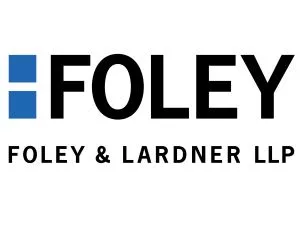- with readers working within the Retail & Leisure industries
- within Coronavirus (COVID-19), Government and Public Sector topic(s)
One of the goals of the new Director of the United States Patent and Trademark Office (USPTO) is to improve patent examination efficiency by leveraging Artificial Intelligence (AI) tools. The Automated Search Pilot Program announced in a Federal Register Notice published October 8, 2025, asks patent applicants to volunteer their applications to help the USPTO assess the impact and feasibility of using AI tools to generate initial prior art search results. Participation does require a fee, but applicants may be willing to participate in order to help the USPTO assess the potential value of AI-generated search results and determine if they might improve examination efficiency and quality.
Program Goals
According to the Notice, the goal of the Automated Search Pilot Program is "to evaluate the impact of sharing the results of an automated search" with applicants prior to examination, as well as to assess the scalability of generating automated search results. The USPTO contemplates that providing "automated search results" to an applicant early in the examination process "will provide the applicant with an earlier communication regarding potential prior art issues in their application," and offer an opportunity to "place the application in better condition for examination" before it is reviewed by the examiner. The USPTO also expects the automated search to "provide[] a new pathway to identify relevant prior art for patent examiners to improve examination quality and efficiency."
Participating In The Pilot Program
The Automated Search Pilot Program will begin October 20, 2025, and will only be open to brand new utility patent applications:
Only original, noncontinuing, nonprovisional utility applications filed under 35 U.S.C. 111(a) on or after October 20, 2025, and on or before April 20, 2026, are eligible to participate in the pilot program.
Thus, the following applications will not be included: international applications that have entered the national stage under 35 U.S.C. 371; plant applications; design applications; and reissue applications.
In addition, continuing (i.e., continuation, divisional, or continuation-in-part) applications will not be included.
To participate in the program, applicants must file a petition using a new form (Form PTO/SB/470, titled "CERTIFICATION AND PETITION UNDER 37 CFR 1.182 TO PARTICIPATE IN THE AUTOMATED SEARCH PILOT PROGRAM" and pay the petition fee set forth in 37 CFR 1.17(f) (currently $450 for a large entity or $180 for a small entity).
As explained in the Notice, the petition must be filed with the application papers (at the time the application is filed), but will not be decided until the application has completed pre-examination processing. Due to the short timeframe of the program, applicants will not be given an opportunity to correct any defects that led to denial of a petition to participate.
The Federal Notice sets forth additional participation requirements that and should be consulted before any petition is filed.
The Automated Search
As explained in the Notice, "[t]he automated search will be conducted using an internal Artificial Intelligence (AI) tool" that uses the CPC classification of the application, specification, claims, and abstract as contextual information. The Notice explains further:
The AI tool will use the contextual information to find similar information in publicly available documents located in a number of databases available to the USPTO, including U.S. Patents, U.S. Pre-Grant Publications (PG-Pubs), and Foreign Image and Text (FIT). The FIT database includes publications from a number of foreign patent authorities. The AI tool will rank the returned documents from most to least relevant.
The Notice provides the following additional information on the AI tool and confidentiality:
The AI models supporting the automated search are trained using publicly available patent data, including text of patents and published applications, patent classifications, document citations, and human-rated similarity. The training data excludes applicant, inventor, and assignee information because this information may introduce potential biases in the model. The USPTO has implemented measures for the AI tool to ensure data security and maintain patent application confidentiality as required by 35 U.S.C. 122(a). See New Artificial Intelligence Functionality in PE2E Search, 1504 OG 359 (November 15, 2022).
The Automated Search Results Notice (ASRN)
According to the Notice, the results of the automated search will be the generation of an ASRN that will be sent to the applicant and placed in the application file. Importantly, applicants are not required to respond to the ASRN, but may elect to do so as outlined below. The ASRN will list up to 10 documents returned by the AI tool, "listed in descending order of relevance as determined by the AI tool." According to the Notice, "[c]opies of the documents cited in the ASRN will not be placed in the file"— applicants will have to obtain copies themselves.
Putting The ASRN To Use
As noted above, applicants are not required to respond to the ASRN, but the USPTO hopes they will do so (when appropriate), such as by:
- filing a preliminary amendment
- filing a petition for express abandonment under 37 CFR 1.138(d) and requesting a refund of the search fee and any excess claims fees
- filing a request for deferral of examination under 37 CFR 1.103(d)
Any of these actions must be pursued promptly, before the examiner commences examination—no specific time period to take action is guaranteed.
According to the Notice, examiners will consider the ASRN documents as they would their own search results, and will not be required to list ASRN documents on Form PTO-892 unless relied upon in a prior art rejection.
While applicants are not required to cite the ASRN documents in an Information Disclosure Statement (why would they be???), the ASRN documents only will be listed on the face of the patent if formally made of record by the examiner on a Form PTO-892 or cited by the applicant in an Information Disclosure Statement. (Yes, the USPTO has found a way to increase the already-high IDS burden!)
Evaluating The Pilot Program
As noted above, the primary goal of the pilot program is "to evaluate the impact of sharing the results of an automated search prior to examination of a patent application." According to the Notice, the USPTO will specifically evaluate the scalability of generating and mailing the ASRN and the usefulness of the ASRN to applicants. In that regard, "the USPTO anticipates providing an avenue for participants to provide feedback regarding the pilot program."
Promoting Applicant Participation
The success of the Automated Search Pilot Program will depend on applicant participation. It is too bad participation requires a fee, but applicants may be willing to test it out in order to receive prior art search results earlier in the process, and help the USPTO take this step towards implementing AI-assisted prior art searching.
The content of this article is intended to provide a general guide to the subject matter. Specialist advice should be sought about your specific circumstances.


